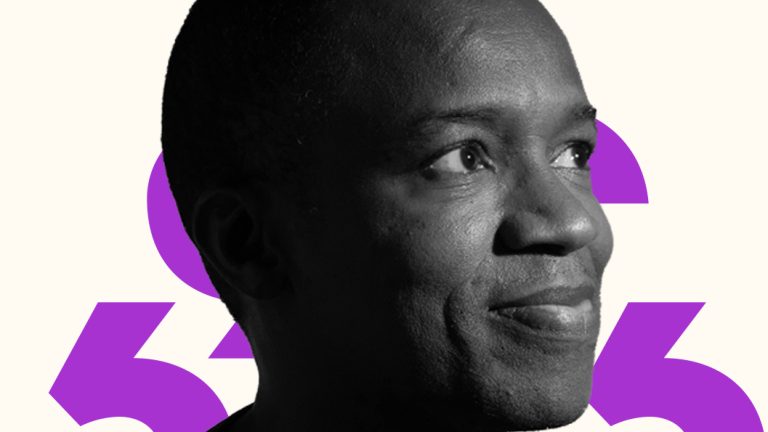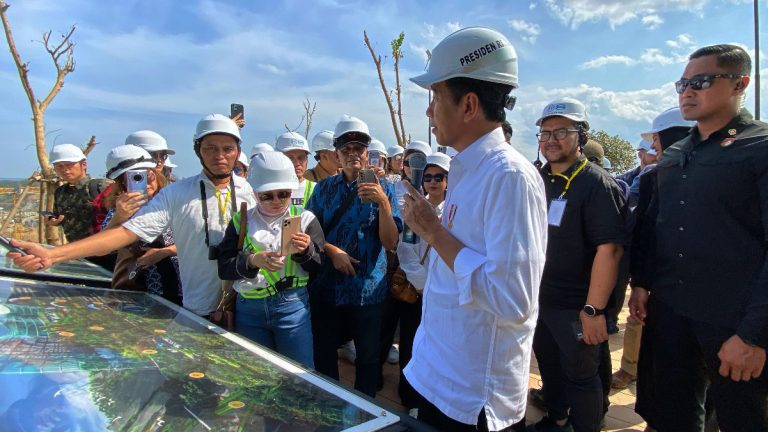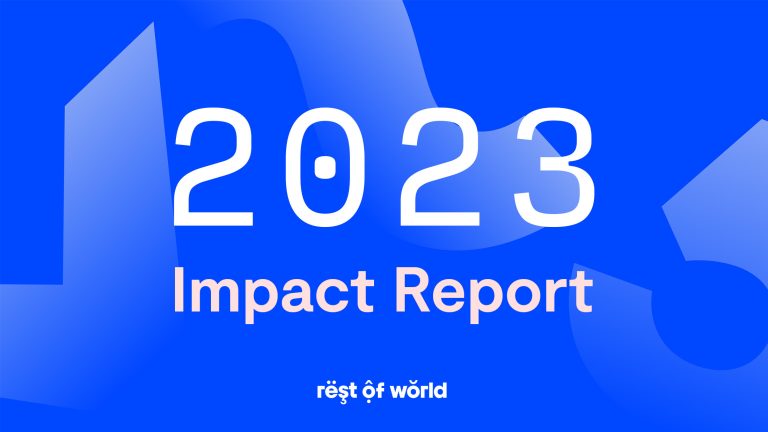It was November 4, 2016, and a protest was raging in the Indonesian capital of Jakarta. As many as 200,000 opponents of the city governor Basuki Tjahaja Purnama (“Ahok”) spilled into the streets, demanding his prosecution for alleged blasphemy of the Holy Quran. Though the day’s demonstrations had begun relatively peacefully, as night fell, they descended into clashes with tear-gas-armed police.
Engineer Ismail Fahmi was idling at his desk, half an eye on the social media-monitoring project he had built. The program had been tracking demonstration-related keywords for two days. As he watched, mentions of the keyword “dead” began to appear repeatedly — a piece of misinformation being pushed through bot networks, he realized, racing across the Twittersphere.
Fahmi launched into action. The source seemed to be an article, posted on a portal called PojokSatu.id, that misleadingly linked two unrelated deaths with the day’s protests. Posting on Facebook, Fahmi reported that the article had been retweeted by bots at exactly the same moment (21:08), and bore tell-tale markers of fake accounts. One, @Abertolf, followed a grand total of three accounts, but had tweeted 11,000 times in just a few months.
The city’s atmosphere was combustible. “I thought, ‘If people on the field that day read this information, they could get angry and create chaos,’” Fahmi told Rest of World. Looking at the screen, he said, “it was plain as day that [the news] was a hoax.”
The following month, Fahmi was invited by the Indonesian Ministry of Communication and Information Technology to analyze another proliferating hoax, one that claimed the government was employing millions of undocumented Chinese workers. He worked his magic again: The news website at the source was blocked by the government shortly after.
The series of events would help make Fahmi famous in Indonesia, and set him up to become the voice of reason in an increasingly distorted information landscape.
These days, he is a household name in local media; bespectacled and fast-spoken, he has built a profile combating misinformation with the data generated by his social media-mapping tools. The proprietary software powers his private consultancy, Media Kernels, while he offers the same analysis tools for free to academics and NGOs.
The balancing act of running a monetized data advisory and investigating misinformation in the public interest, though, places Fahmi in an uneasy space on the Indonesian internet.
Influence operations — bot-driven, automated, paid-for messaging — are ingrained in Indonesian social media, used liberally by the government, the opposition, and corporate marketing alike. They are also among Fahmi’s clients. As these campaigns become more sophisticated and targeted, demand for his services has increased. So has the risk that his methods are a step behind.
Fahmi treads an ambiguous line, somewhere between authority and observer, commercial actor and public conscience. He is known to be unflappably cheerful and easygoing; part of his desire, it seems, not to be part of any camp.
Fahmi refers to his system as “Drone Emprit” — emprit means “finch” in Indonesian — and he likens it to a watchful, bird-like drone flying over thousands of demonstrators. The alias has stuck.

What has been called the “dystopian nightmare” of Indonesia’s online culture can be traced back to the 2014 general election. Back then, social media-savvy campaigns run by candidates Joko Widodo and Prabowo Subianto gave birth to a culture of online partisan dueling, fueled by armies of online promoters, or “buzzers.”
Bot networks are now common enough to have become an everyday marketing tool, employed by agencies to spam messaging on behalf of multinational companies. Influence operations for hire push messages on contentious issues ranging from palm oil to West Papuan independence.
Drone Emprit has given Fahmi a unique status. “He’s a pioneer in the field,” said Ross Tapsell, a senior lecturer specializing in Southeast Asian media at the Australian National University. “He’s in demand, both by Indonesians and foreigners, because this is an emerging field of research [using] big data analysis.”
Media Kernels sells media monitoring services, and is the for-profit incarnation of Drone Emprit. Drone Emprit itself is an alias maintained by Fahmi to — at least superficially — separate his debunking projects from his commercial services. While Drone Emprit rose to prominence during the 2016 protests, Media Kernels was established in 2015, with a series of analytics that were the product of six years of tinkering with code.
Raised in a quiet East Javanese village by a father who loved to fix electronics, Fahmi developed an early interest in engineering. He graduated from Bandung Institute of Technology’s electrical engineering program in 1997 and led the creation of Indonesia’s first-ever digital library network, Indonesia Digital Library Network, which connected the research papers of 20 academic institutions.
After moving to the Netherlands and completing a masters and doctorate in information science, Fahmi in 2010 began building the system that would become Drone Emprit. He worked on it in the small hours of the morning, around his day job at a Dutch startup. He poured in everything he knew about machine learning and natural language processing.
“I was very interested in the way Google gathered news, so I created a similar crawling machine to gather from [Indonesian news portals] Detik, Kompas, and the like,” Fahmi said. He spoke to Rest of World against a custom Zoom background displaying Drone Emprit’s most recognizable tool, the Social Networking Analysis (SNA) map. In a surreal effect, he appeared to be floating in space, surrounded by fiery clusters of red and green sparks.
SNA works by visualizing retweets and mentions on Twitter, which radiate out from their source. To detect emotion, it puts words into categories like joy, trust, anger, fear, anticipation, surprise, sadness, and distrust. Sentiment is measured via supervised machine learning, which assesses whether the reaction is negative or positive. Other keyword tools in the system can mine mentions for a weeks-long period, for example.
“The SNA is perhaps the crown jewel of Fahmi’s system,” said Aqsath Rasyid Naradhipa, CEO of NoLimit Indonesia, Media Kernels’ rival in the media analytics industry. He added that while it was a powerful tool to track misinformation, he believed it to be less competitive as a marketing tool.
Peter Vincent, co-founder of London-based Mapimize, which uses the same visualization technology, said that being able to identify who is interacting with misinformation is essential. “You need to look for patterns in the group of related tweets and who’s retweeting them,” said Vincent. “So it’s not just like, here’s a piece of text, analyze it, and tell me whether there’s misinformation.”

Imagine the slow-motion replay of a contentious sporting moment, watched by a referee. This is the careful analogy Fahmi uses when describing what Drone Emprit does: a presentation of data, to be used by an observer who makes the final call.
Fahmi is quick to joke, but not on the subject of neutrality. Drone Emprit’s debunking projects operate in the same online world occupied by Media Kernels’ paying clients; at times, they overlap uncomfortably. Fahmi described how some of Media Kernels’ clients have been upset about being exposed in his investigations into disinformation tactics. He has lost them as customers. (Fahmi declined to give details on who these customers were.)
“The risk is there, because Drone Emprit raises issues,” he said. “Sometimes we don’t know who [is] behind this issue; we just go ahead and expose it. So, they got angry. … Yes, there is an impact.”
Perhaps the most complicating factor is the Indonesian government, whose presence weaves through Drone Emprit’s earliest incarnations to its client list today.
Back in 2012, an offer from a friend led Fahmi to try pivoting his coding experiments toward a commercial media monitoring product. The sixth Indonesian president, Susilo Bambang Yudhoyono, was among the earliest and most prominent clients to sign up. It meant that the needs of the administration shaped much of the early versions of Drone Emprit.
The president’s government was becoming marred by corruption scandals and internal party conflict. It combined with rising unemployment and poverty rates to feed into public discontent. “At the time, online media and social media users were all attacking him,” Fahmi said.
The president was persuaded by his communications team to create his own social media accounts. “We analyzed the [conversations on] social media and gave the president’s team suggestions, so they could have a softer landing,” said Fahmi.
By the end of the contract, the Drone Emprit system had grown. It could detect sentiments and emotion, map out influencers, see how idea clusters form within social networks, identify narrative patterns, analyze opinions, recognize entity relations, and extract quotes.
Fahmi is guarded about his client list, but told Rest of World that, today, 40% of them are state-linked and 60% private. Even Fahmi’s critics acknowledge that his role is important. But they point out that he can be selective in choosing targets to debunk — and especially active in analyzing instances where government policies are being attacked.
“I always tell everyone that I’m not part of any camp. I’m a scientist,” Fahmi said to Rest of World. “My goal is to educate people with data, that’s it.”
To the overwhelming majority of observers, Fahmi successfully treads the line between the interests of entities who could be either his clients or his targets. Drone Emprit is one of a kind. With it, Fahmi has established credibility as a misinformation authority in a noisy landscape.
Fact-checking has been the traditional method for countering misinformation in Indonesia, but it is considered too slow and reactive. The country is home to the world’s largest such network: the Cek Fakta initiative, a network of 6,000 fact-checkers that incorporates around 25 media organizations.
“We have told the social media platforms: ‘This algorithm is dangerous, please turn it off,’ but they are not willing to because it is all about the engagement business.”
Among those groups, some told Rest of World that big platforms such as Facebook and Twitter only removed accounts spreading misinformation after significant public pressure or if nonprofits raised complaints.
“We have told the social media platforms: ‘This algorithm is dangerous, please turn it off,’” Harry Sufehmi, the founder of Indonesian anti-hoax nonprofit MAFINDO (Masyarakat Anti Fitnah Indonesia, or the Indonesian Anti-Slander Society), told Rest of World. “But they are not willing to, because it is all about the engagement business.”
A Facebook spokesperson told Rest of World that, in Indonesia, Facebook partners with six organizations certified through the International Fact-Checking Network — Kompas, Tempo, Liputan6, Tirto, MAFINDO, and Agence France-Presse. Posts marked false will have their distribution in the news feed reduced, while AI helps identify near-identical posts across the platform. They remove content when it “breaks [the] rules.”
In the academic and media community, there is a sense that by the time a rumor requires debunking, it’s already too late. Indonesia suffers from low digital literacy. Commentary points out that a more effective response would be to take action much earlier, and redirect the people who feed misinformation through bots into other jobs.
Fahmi, in some ways, enjoys a high degree of authority along with low liability. He pointed to the t-shirt he was wearing to our Zoom meeting, which showed the motto of Drone Emprit: “We don’t claim to be neutral, but we insist on being truthful.”
“I’m pro-data, I present data. I don’t try to be neutral – and I can’t be neutral, I have to side with data,” he said. “But I try to convey things as is. Being truthful is being honest. … Yes, that’s it – I’m just trying to be honest.”



